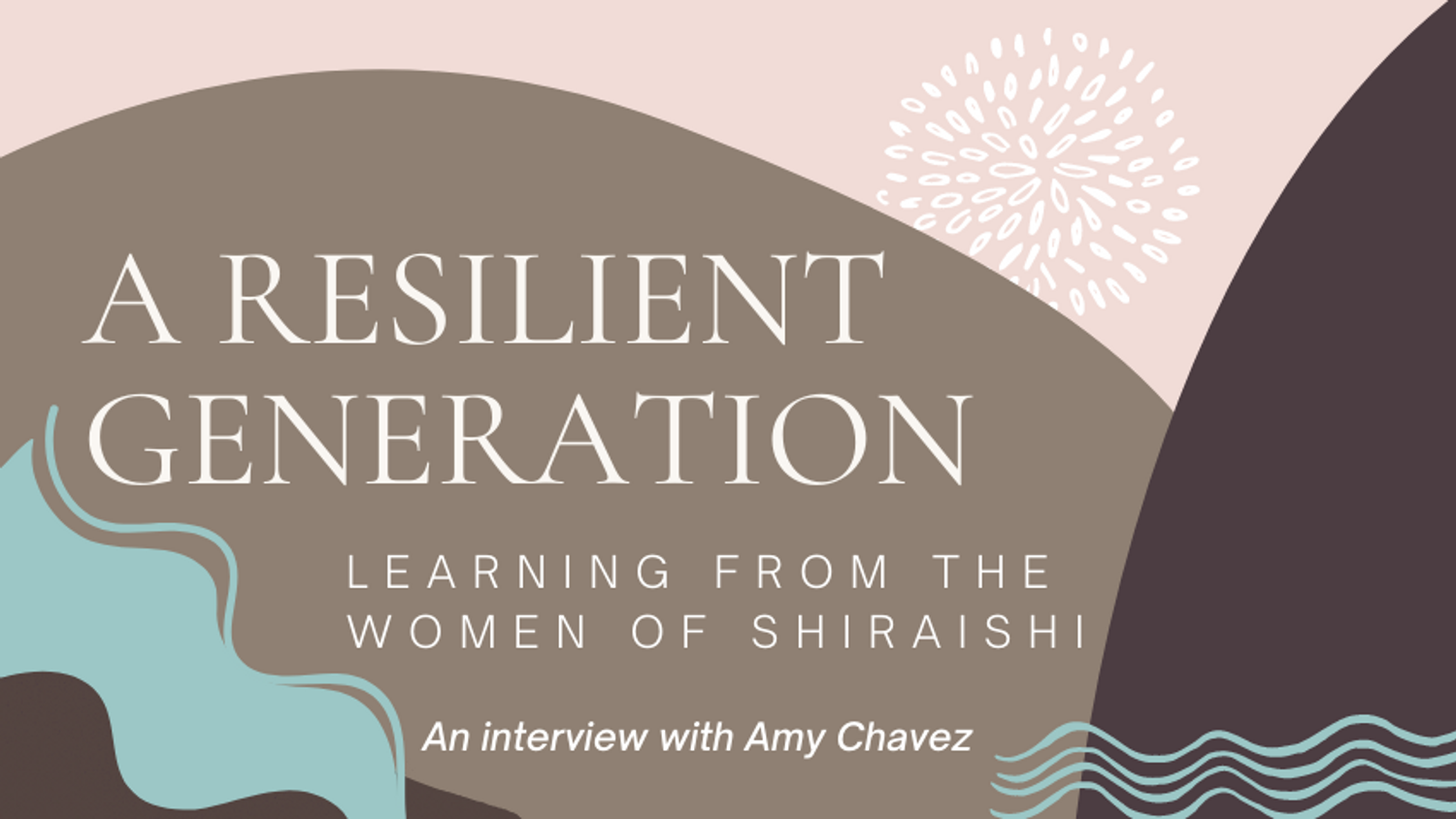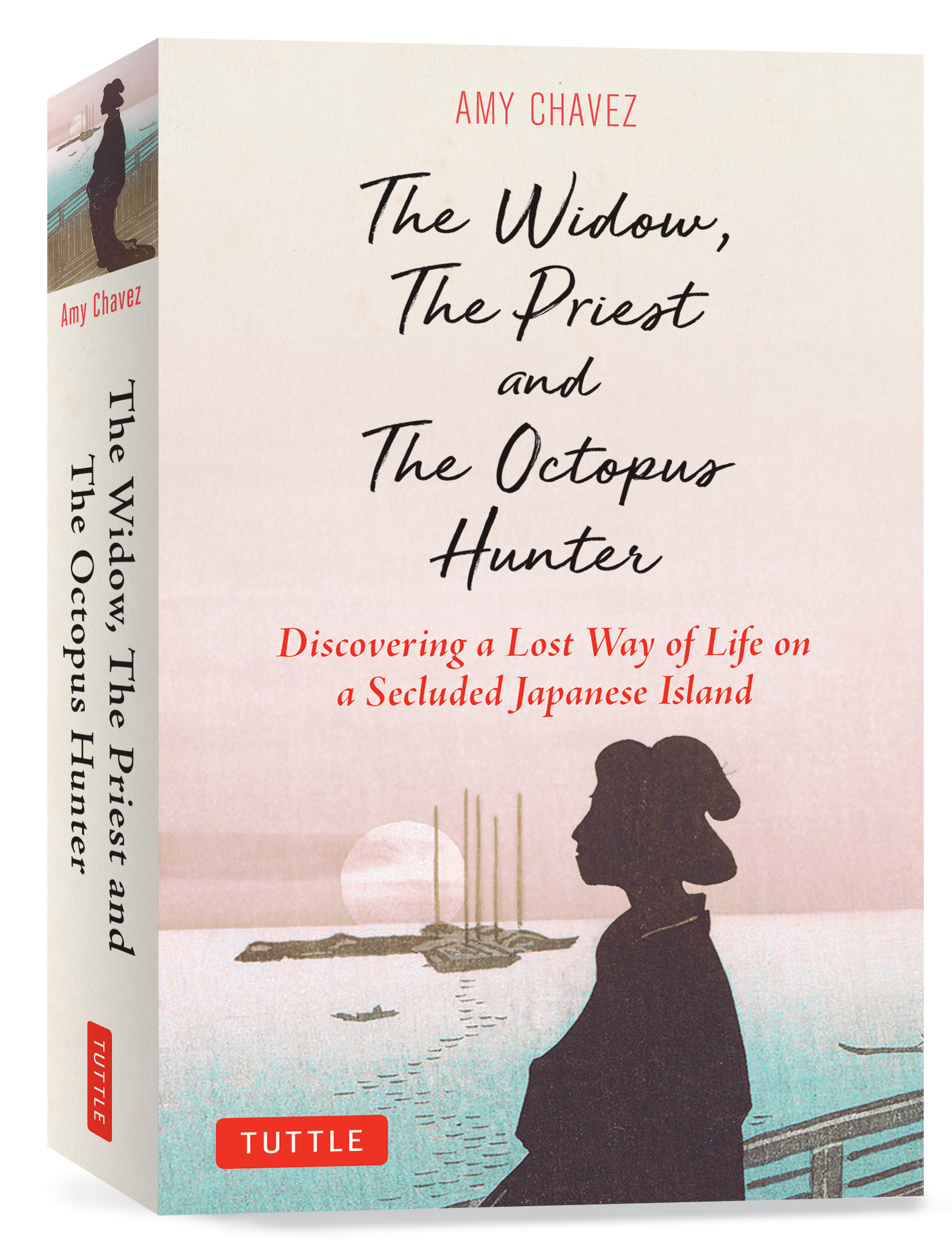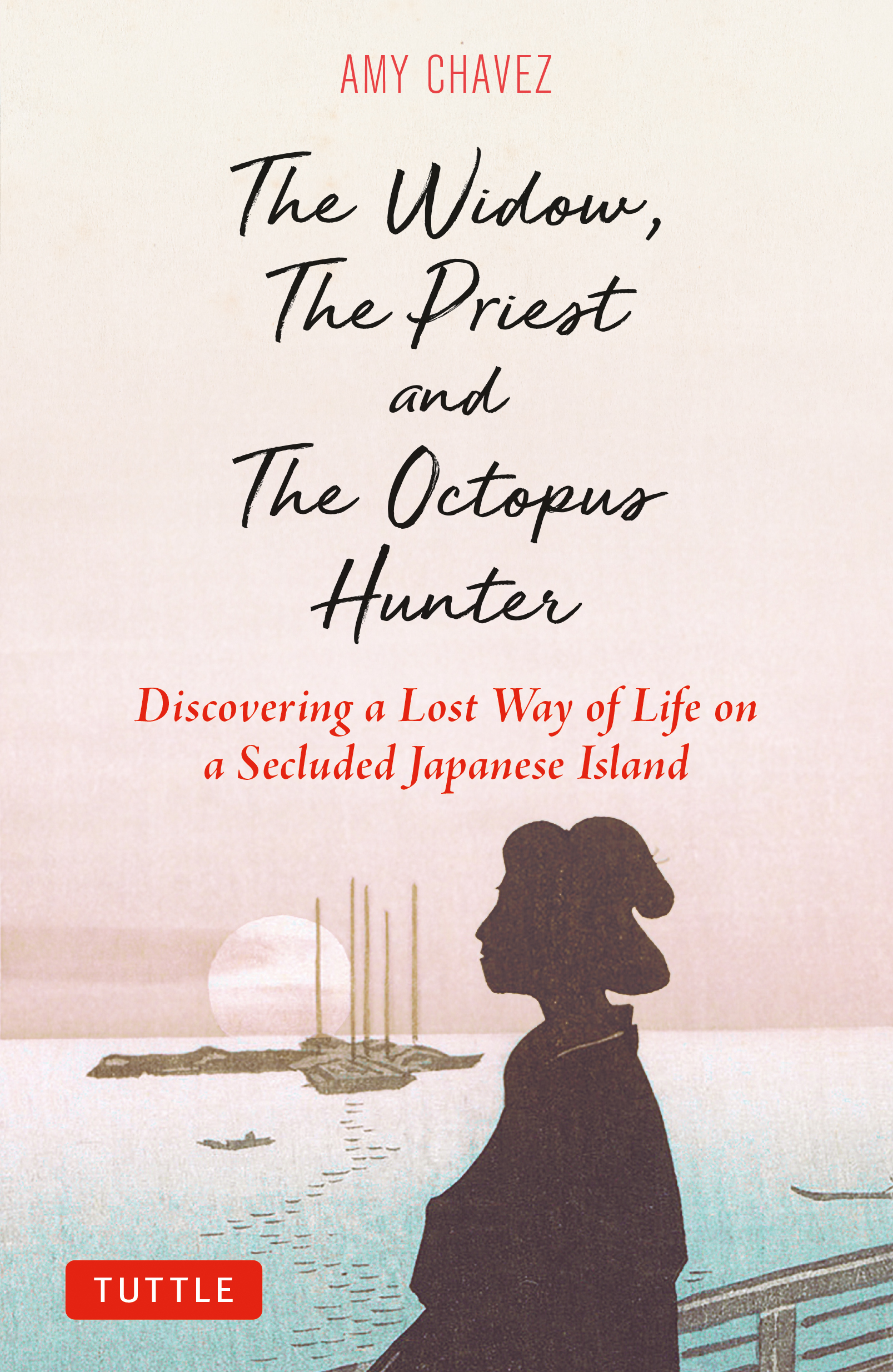In honor of Women's History Month, we are featuring articles from some of our amazing women authors. This week we interview Amy Chavez, author of the upcoming book The Widow, the Priest, and the Octopus Hunter, which comes out in May from Tuttle.
Amy, your book The Widow, The Priest, and the Octopus Hunter features stories about the people of Shiraishi, a remote Japanese island where you live (pop. 430). What is it like living among the small community there?
I hope readers will get the feeling of what it is like to live among these extraordinary people when they read this oral history of the island told via the residents, most of whom have been my neighbors for over 25 years. Island communities are different than their small village counterparts on the mainland. When you’re hemmed in by water, and the only way off is by boat, this affects the dynamics of the community. I think it has made for an insular, but also stronger, community that thrives due to deep bonds and mutual reliance.
I often feel like I’m a part of some exclusive women’s club. The island women get together constantly to forage for herbs, to cook, talk about life, and discuss world events. They rally to support each other no matter what. Gifts pass from person to person: vegetable produce from gardens, for example, or a watermelon someone has received and divvied up. A neighbor might leave some chocolates on my doorstep because there were so many in the bag she just bought. Sharing is very important here; it symbolizes friendship, joy, and caring as well as alliance.
One thing that immediately becomes clear in your book is the way that tradition has ordered the lives of the island's residents. What have you learned about the history of the place and how things have changed and developed over time?
Shiraishi island has been inhabited in some small measure since the Kofun period (300-538 AD) but the island wasn't developed until the beginning of the Edo Period, during the same years Matsuo Basho penned his famous travel diary Narrow Road to the Interior (1694). Shiraishi Island was under the domain of Fukuyama castle and the feudal lord needed a place to graze his military horses. So that was the beginning of the development of the island. Shiraishi was also a key stopover for daimyo lords along the sankin kotai sea route to Edo when visiting the Shogun. But large numbers of people didn’t start living here until the Meiji Period (1868-1912).These inhabitants were fishers, so the island grew up and thrived to become a fishing village of 2,000. Fishing was a family affair, and the women helped their husbands.
It’s Women’s History Month here in the U.S., and your book features truly poignant stories from the island’s older women. Was there a story that stood out to you as particularly impactful or moving?
The women here are just so stalwart, it’s impressive. They are not at all the stereotype of the meek or yielding Japanese woman. There’s the self-reliant "Runaway,” who escaped to Tokyo when she was a high school student and married a Tokyo boy not of her parents’ choosing. There’s "The Go-Between” who, like many others, thinks herself lucky she took the partner her parents had chosen for her rather than the one she would have chosen (and she herself became a go-between). “The Mother of Eleven” expresses some of the injustices of her marriage and how she reconciled it. The “Tombstone-Maker's Wife" married a man she had never met because she and her six siblings were so destitute, she saw it as an opportunity to escape poverty.
Historically, women on the island have experienced arranged marriage and other bygone marriage-related customs. And yet, there is a sense that they find immense strength and often good humor amidst these experiences. Tell us more about the resilience of older women on the island.
Arranged marriage was the norm in Japan when these women were growing up which was before WWII. It’s difficult for Americans to imagine such a system, but for the Japanese, as in many other Asian countries, it was not considered strange, unfair or unjust by either the bride or groom. One of the interviewees elucidated on why arranged marriage was so important, and why it succeeded to the extent it did. When you hear their point of view, the system makes more sense. It was a different time, and people had different concerns in the early 20th century. And when you consider the amount of time it takes for customs to change in the countryside when compared to the cities—and even longer for an island that is cut off from the mainland—you see why the traditional Japanese lifestyle here has persevered for so much longer than the mainland.
During the time of arranged marriage, girls still looked forward to their wedding days with great anticipation and with stars in their eyes. It was an exciting time for both partners, a time of new beginnings and new possibilities. Back then weddings lasted four days and were quite elaborate. They would certainly know who their marriage partner was, and would have time to get together beforehand. Overall, potential brides and grooms trusted their parents (along with a go-between) to choose someone not just who would be compatible, but would also make a good mother, or a good father. This is in contrast to the West, where compatibility is put first, and considerations for parenting capability tend to come second. But in Japanese pairings, there were no such demands, nor even expectations, that the couple get along like a house on fire. As a result, women had much closer relationships with other women than with their spouses, and they turned to each other for support.
On the other hand, as the stories in this book reveal, many spouses did love each other, and grew to care deeply for the other. There were also times marriages didn’t work, like many modern-day marriages don’t always work (even when we’ve chosen the partner ourselves!). So arranged marriage was merely a system, and not necessarily a dreaded one in the eyes of either gender, both of whom were subject to the same arrangement.
World War II plays a pivotal role in many of the stories you tell in your book. In particular, you tell the stories of war widows, giving a unique glimpse into the effects of the Pacific war on ordinary Japanese women. Can you speak to this?
When I first moved to the island, I rented a house from a war widow who had left the island six months earlier to live with her son on the mainland. I literally moved into the house as it was, among her furnishings, and I became intrigued by the small glimpses of her life that I’d encounter: photos, kimonos, prayer beads, Doll Festival decorations, etc. When I started doing research on Japan’s war widows, I was surprised at how little information was available. So I knew this would be an important role for the book: to expose this aspect of the Pacific war, to show how Japanese women managed to cope with the loss of their husbands, often while still having several small children at home to care for. It was really tough for them to survive with no insurance, no pension, and no compensation. And they were sometimes discriminated against as well.
As Shiraishi attempts to both remain viable and hold onto tradition among so many cultural changes, how do you see the future taking shape for its people, particularly its women?
The women here have adapted because they’ve had to. They’ve been forced to modernize along with society, which must be pretty difficult when they’ve lived up until now under a different set of values. So, we have women in their nineties living alone in these big old beautiful, traditional Japanese homes that previously would have been passed down to the eldest son, after which she would have retired to a room off the side of the house or in a granny flat out back. But since the son has left the island to work in faraway Osaka or Tokyo, the mother is left to manage the home, the repairs, and to maintain the Japanese garden. She’s not leaving the major decisions to her children, because in such a remote location, they can’t just drop in once a week to check in and see what needs to be done. And since her husband is likely deceased, she not only has to take on the roles that her son and her daughters-in-law would usually provide, but also that of her husband who would have taken out the garbage, gone to buy kerosene used to fill the kerosene heaters, paid the bills, etc. So it’s a lot of responsibility for an elderly person. You have to have all your faculties, be physically strong, and determined. It really is survival of the fittest here.
There is no doubt that when these ladies pass on, they will take most of the old customs with them, which is sad. Already, so many of the island traditions have vanished. But there are some islanders, mostly those in their 60s or 70s who are working to keep some of the more charming practices alive: the festivals, the good luck rituals, the prayers to the gods of nature, the civility and politeness. But once they also pass on, there will be no one to carry the baton. The population is not being replaced with young people, or even outsiders, and with Japan’s declining depopulation, there is no reason to feel especially optimistic.
But by living amongst these islanders, and especially these resilient women, I’ve been able to experience a tenuous link to Japan's fragile past. I’ve witnessed the care, the effort, and the pure beauty that was put into living a fulfilled life on a small island in the Inland Sea. These island voices are what I want to share with my readers.
When American journalist Amy Chavez moved to the tiny island of Shiraishi (population 430), she rented a house from an elderly woman named Eiko, who left many of her most cherished possessions in the house—including a portrait of Emperor Hirohito and a family altar bearing the spirit tablet of her late husband.
Why did she abandon these things? And why did her tombstone later bear the name of a daughter no one knew? These are just some of the mysteries Amy pursues as she explores the lives of Shiraishi's elusive residents.
Set on the picturesque island of Shiraishi in Japan's Inland Sea, this poignant collection of stories about the island's mostly elderly residents captures a vanishing way of life. The Widow, the Priest, and the Octopus Hunter releases in May 2022, and you can pre-order it now.

Amy Chavez arrived in Japan from America in 1993, fresh out of graduate school. After a few years enjoying the city life, she began a search for the "real Japan" and found it on Shiraishi (population 430), a tiny island in the Seto Inland Sea. For ten years she lectured at a Japanese university before becoming a full-time writer. For over 20 years she has penned a column for The Japan Times covering issues central to island life such as tourism, the environment, aging and depopulation. She and her Australian husband have been renovating their Japanese home on Shiraishi for the past 17 years, the amount of time it takes some species of cicada to reach maturity. Chavez is the author of several books, including The Widow, the Priest, and the Octopus Hunter, releasing in May from Tuttle Publishing.



